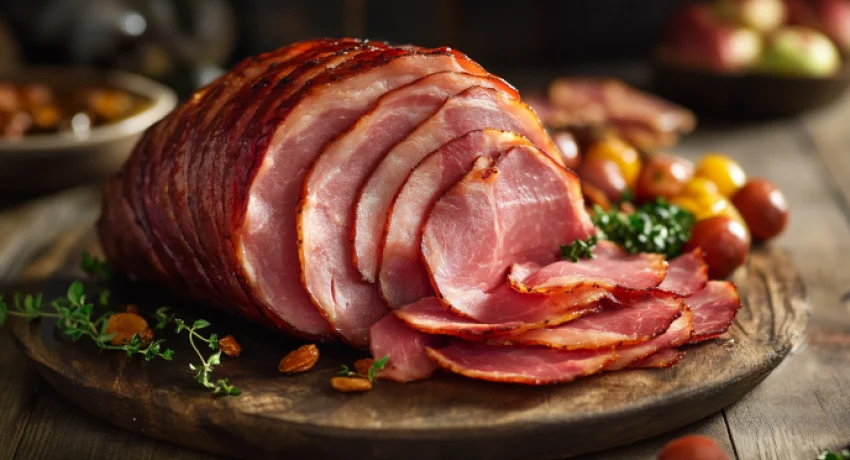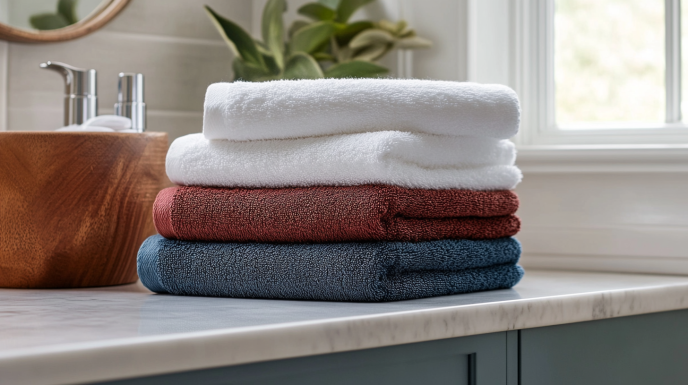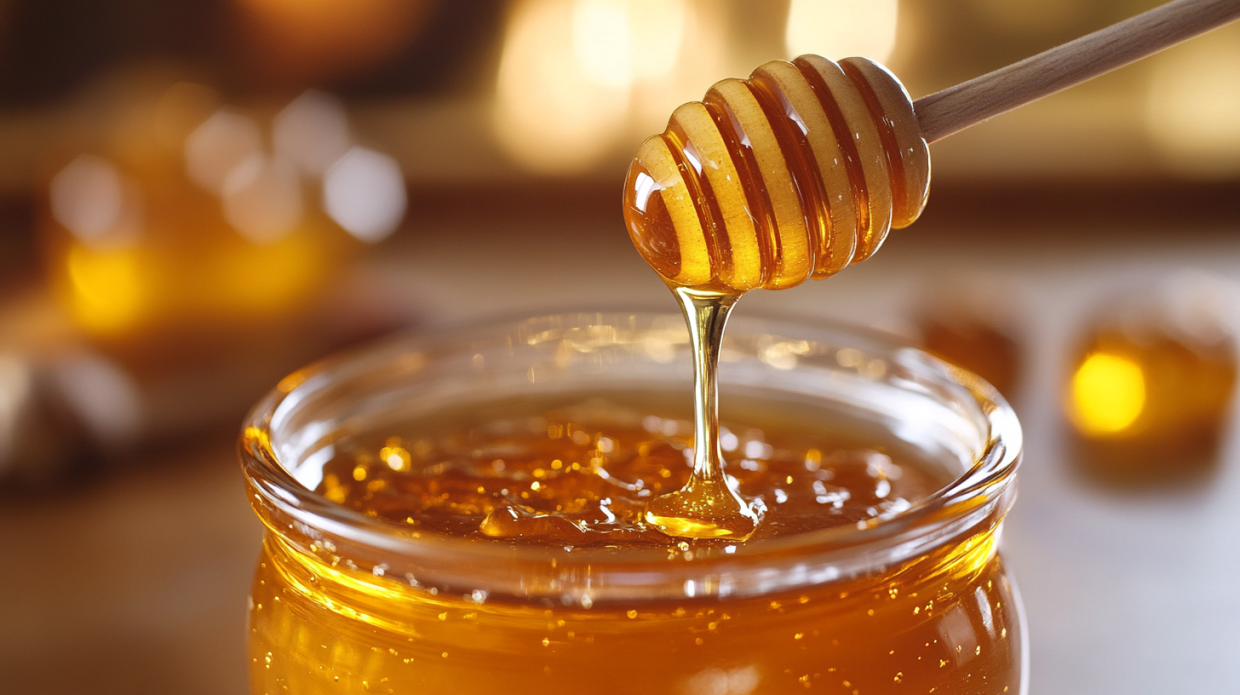
Kirkland Signature Spiral Sliced Ham, Hickory Smoked, 9 lb avg wt
- Spiral Sliced Ham with Natural Juices
- Hickory smoked
- Fully cooked
- Pre-sliced
- Weight includes 6 oz glaze
- Random Weight (R/W): 9 lb avg
From Holiday Feasts to Everyday Delights: Discovering Costco’s Premium Ham Selection
There’s something undeniably special about serving a perfectly glazed ham as the centerpiece of your family gathering. The moment when you pull back the foil, revealing that glistening, caramelized exterior, a collective “mmm” often fills the room. For many Costco members, Kirkland Signature ham has become the star of countless memorable meals, from Christmas dinners to Easter brunches and Sunday family feasts.
As a devoted Costco shopper and self-proclaimed ham enthusiast, I’ve spent years exploring the nuances of their ham offerings. What started as a practical holiday purchase has evolved into a genuine appreciation for the quality, value, and versatility of Kirkland’s ham selection. Whether you’re a ham novice wondering about cooking times or a seasoned chef curious about nutritional details, this comprehensive guide will answer all your burning questions about this beloved Costco staple.
The Kirkland Ham Family: Varieties to Suit Every Taste
Costco’s Kirkland Signature line doesn’t offer just one type of ham – they provide several options to match different preferences, occasions, and serving sizes. Let’s explore the main varieties you’ll find in the refrigerated section of your local warehouse.
Spiral-Cut Ham: The Crown Jewel
The most popular and widely recognized Kirkland ham is undoubtedly their spiral-cut variety. These hams come pre-sliced in a continuous spiral pattern around the bone, making serving incredibly convenient – simply pull the slices away as needed. The genius of spiral-cutting eliminates the awkward tableside carving while ensuring each slice maintains the perfect thickness.
Kirkland’s spiral-cut ham typically features a bone-in design, which contributes significantly to its flavor profile. Many culinary experts agree that bone-in hams offer superior taste and juiciness compared to their boneless counterparts. The bone itself becomes a prized ingredient afterward for flavoring soups, beans, or collard greens.
Boneless Ham Options
For those who prioritize ease of serving and maximum meat yield, Kirkland also offers boneless ham varieties. These cylindrical-shaped hams provide consistent slices without navigating around a bone. The boneless options come in both smoked and non-smoked versions, catering to different taste preferences.
The convenience factor cannot be overstated – boneless hams are exceptionally easy to slice, serve, and store. They’re particularly popular for smaller gatherings or for households that plan to use the ham for sandwiches and other recipes throughout the week.
Applewood Smoked: A Flavor Adventure
One of the most distinctive offerings in the Kirkland ham lineup is their applewood smoked ham. This variety undergoes a special smoking process using applewood, which imparts a subtly sweet, fruity note to the meat. The smoke flavor isn’t overpowering but adds wonderful depth that complements the natural sweetness of the pork.
The Price Point: Value That’s Hard to Beat
One of the most compelling reasons Costco members gravitate toward Kirkland ham is the exceptional value. While prices fluctuate seasonally and vary by location, Kirkland hams typically range from $2.29 to $2.99 per pound – significantly less than specialty ham retailers like HoneyBaked Ham, which can charge $8-12 per pound.
For a typical 7-9 pound spiral-cut ham, you’re looking at approximately $16-27 total, which can easily serve 10-14 people. This translates to roughly $2 per serving for a premium centerpiece – a remarkable value proposition for holiday hosts.
During holiday seasons (particularly Easter and Christmas), Costco often features special pricing on their hams, making them even more attractive. The combination of quality and affordability makes Kirkland ham one of the best values in the entire warehouse.
Convenience Factor: Pre-Cooked for Your Peace of Mind
One critical detail that makes Kirkland hams particularly user-friendly: they come fully pre-cooked. This is true for all varieties – spiral-cut, boneless, and applewood smoked. This pre-cooking accomplishes several important things:
- It significantly reduces your preparation time at home
- It minimizes food safety concerns since you’re simply reheating, not cooking raw meat
- It ensures consistent quality and doneness
- It makes the ham much more forgiving if you slightly over or under heat it
The pre-cooked nature doesn’t mean you should skip the heating process, however. Warming the ham properly is essential for developing those delicious flavors and achieving the ideal texture. But knowing it’s already fully cooked provides peace of mind, especially for those less experienced in preparing large cuts of meat.
What’s Inside: Ingredients and Nutrition
Kirkland maintains relatively straightforward ingredients in their hams compared to many competitors. The typical ingredient list includes:
- Pork
- Water
- Salt
- Sugar
- Sodium phosphates (for moisture retention)
- Sodium erythorbate (preservative)
- Sodium nitrite (preservative)
Some varieties may include additional flavorings such as natural smoke flavoring or honey. Kirkland prioritizes a cleaner ingredient profile than many budget ham options, avoiding fillers and unnecessary additives.
From a nutritional standpoint, a 3-ounce serving of Kirkland spiral-cut ham typically contains:
- Calories: 140
- Protein: 19g
- Fat: 5g
- Carbohydrates: 4g
- Sodium: 960mg
The sodium content reflects the curing process essential to ham production. For those monitoring sodium intake, be aware that ham is inherently a higher-sodium food category.
The Glaze Factor: Sweet Accompaniments
One of the signature features of Kirkland’s spiral hams is the included glaze packet. This convenient addition allows you to customize the sweetness level of your ham’s exterior. The standard glaze typically contains:
- Brown sugar
- Honey
- Spices (often including cinnamon, nutmeg, and clove)
- Natural flavors
The glaze packet comes separately, allowing you to decide whether to use all, some, or none based on your flavor preferences. Some home cooks prefer to create their own custom glazes with ingredients like bourbon, maple syrup, or fruit preserves, which is also perfectly fine with Kirkland hams.
When applied during the final 15-20 minutes of heating, the glaze transforms into a sticky, caramelized coating that balances beautifully with the savory ham beneath. The contrast between the sweet exterior and the smoky, salty meat creates that classic ham experience many families cherish.
Size Matters: Finding Your Perfect Ham
Kirkland hams come in various sizes to accommodate different gathering sizes:
- Small spiral-cut hams: 7-9 pounds (serving 10-14 people)
- Medium spiral-cut hams: 9-11 pounds (serving 14-18 people)
- Large spiral-cut hams: 11+ pounds (serving 18+ people)
- Boneless hams: Typically 4-6 pounds (serving 8-12 people)
When selecting your ham, a good rule of thumb is to calculate 1/2 to 3/4 pound per person for bone-in hams and 1/3 to 1/2 pound per person for boneless varieties. Remember that bone-in hams include the weight of the bone, which reduces the actual meat yield.
Many Costco shoppers report that the ham selection is most robust during holiday seasons, particularly in the weeks leading up to Easter and Christmas. During these periods, you’ll likely find the fullest range of sizes available.
Mastering the Art of Preparation: Cooking Your Kirkland Ham
Since Kirkland hams come fully cooked, the “cooking” process is actually reheating. Here’s the standard method for optimal results:
- Preheat your oven to 325°F
- Remove ham from packaging, reserving any included juice
- Place ham cut-side down in a roasting pan
- Cover tightly with aluminum foil
- Heat approximately 10-12 minutes per pound (about 90 minutes for an average ham)
- During the final 15-20 minutes, remove foil, apply glaze, and increase oven temperature to 400°F to caramelize
- Allow ham to rest 15 minutes before serving
For best results, use a meat thermometer to reach an internal temperature of 140°F, which ensures thorough heating without drying out the meat.
The low-and-slow approach, coupled with proper moisture protection via foil, is the secret to maintaining the ham’s succulence while achieving that perfect glaze.
Alternative cooking methods include:
- Slow cooker: 4-5 hours on low (best for smaller hams)
- Instant Pot: Approximately 2 minutes per pound plus natural release (space-limiting but fast)
- Smoker: 2-3 hours at 225°F (adds extra smoky dimension)
Dietary Considerations: Allergens and Restrictions
For those with dietary restrictions, here’s what you need to know about Kirkland hams:
- Gluten-free status: Kirkland hams are generally considered gluten-free, though they don’t carry specific certification. The ingredient list doesn’t contain wheat or gluten-containing additives.
- Nitrates/Nitrites: Like most commercially produced hams, Kirkland hams do contain sodium nitrite as a preservative. This ingredient helps prevent bacterial growth and maintains the characteristic pink color. For those avoiding nitrates/nitrites, Kirkland doesn’t currently offer a nitrate-free alternative.
- MSG: Kirkland hams do not contain added monosodium glutamate (MSG), making them suitable for those avoiding this flavor enhancer.
- Artificial preservatives: While the hams contain sodium erythorbate and sodium nitrite (which are considered preservatives), they avoid many of the additional artificial preservatives found in lower-quality processed meats.
The Competition: How Kirkland Stacks Up
The premium ham market has several notable players, with HoneyBaked Ham being perhaps the most recognized specialty competitor. How does Kirkland compare?
Price comparison:
- Kirkland: $2.29-$2.99/lb
- HoneyBaked Ham: $8.99-$11.99/lb
- Other grocery store brands: $3.99-$5.99/lb
Flavor profile:
While HoneyBaked Ham features a distinctive sugar-crusted exterior created through a proprietary glazing process, many ham enthusiasts find Kirkland’s flavor profile remarkably similar, especially when the included glaze is properly applied. The primary difference lies in the thickness of the sweet exterior coating rather than fundamental quality differences.
Texture and moisture:
Both Kirkland and premium competitors prioritize moisture retention. In blind taste tests, many consumers struggle to identify the more expensive option, suggesting the quality gap may be smaller than the price difference implies.
Real Talk: Customer Reviews and Experiences
The online consensus regarding Kirkland ham is overwhelmingly positive. Across various platforms, including Costco’s own review system, Reddit’s r/Costco community, and food blogs, the ham consistently receives 4+ star ratings.
Common praise points include:
- Exceptional value for the quality
- Consistent moisture and tenderness
- Convenience of the spiral cut
- Quality of the included glaze
- Versatility for leftovers
Criticism, when it appears, typically centers around:
- Occasional inconsistency in size availability
- Higher sodium content (though this is typical of all hams)
- Limited availability outside holiday seasons in some warehouses
One particularly telling review from a former HoneyBaked Ham employee stated: “After years of selling ‘premium’ hams at triple the price, I switched to Kirkland for my own family gatherings. Nobody has ever noticed the difference, except my wallet.”
Holiday Hero: Perfect for Special Occasions
While ham is enjoyed year-round, it reaches peak popularity during certain holidays. Kirkland ham shines particularly bright for:
- Easter: The traditional centerpiece for many Easter dinners
- Christmas: A festive alternative or companion to turkey or roast beef
- New Year’s: Often featured in good luck meals alongside black-eyed peas in Southern traditions
- Family gatherings: The ideal crowd-pleaser for reunions and large gatherings
The combination of easy preparation, impressive presentation, and crowd-pleasing flavor makes Kirkland ham particularly well-suited for holiday meals when hosts are juggling multiple dishes and timing concerns.
Storage Smarts: Keeping Your Ham Fresh
Proper storage ensures your Kirkland ham maintains optimal quality:
Before cooking:
- Refrigerate immediately upon purchase
- Keep in original packaging until ready to prepare
- Use within 7-10 days of purchase date, or freeze
After cooking:
- Refrigerate leftovers within 2 hours of serving
- Store in airtight containers or tightly wrapped
- Consume refrigerated leftovers within 5 days
- Freeze leftover ham up to 2 months for best quality
For freezing whole uncooked hams, they can maintain good quality for 6-8 months in a proper freezer set at 0°F or below.
Sustainability and Sourcing: The Origin Story
Costco has been increasingly transparent about its meat sourcing practices in recent years. While specific farm sources aren’t identified for Kirkland hams, Costco has established animal welfare policies that apply to their pork suppliers, including:
- Phasing out gestation crates
- Requiring third-party animal welfare audits
- Monitoring antibiotic use
Costco’s scale allows them to exert significant influence on meat industry practices, gradually pushing suppliers toward more sustainable and humane methods.
For shoppers particularly concerned about sourcing, it’s worth noting that Kirkland hams represent a mainstream commercial product rather than a specialty farm-to-table item. Their value proposition centers on quality-to-price ratio rather than artisanal or heritage breeding practices.
Beyond Dinner: Creative Uses for Leftover Ham
One of the joys of purchasing a Kirkland ham is the potential for delicious leftovers. Here are some inspired ways to repurpose your ham in the days following your main event:
- Cuban sandwiches: Layer thin ham slices with Swiss cheese, pickles, mustard and pork on Cuban bread for an authentic treat
- Split pea soup: Simmer the ham bone with split peas for a hearty, comforting soup
- Breakfast hash: Dice ham and crisp with potatoes, peppers, and onions, topped with a fried egg
- Quiche or frittata: Add chopped ham to egg dishes for instant flavor
- Ham salad: Pulse leftover ham in a food processor with mayo, pickles, and seasonings for a spreadable delight
- Scalloped potatoes: Layer ham between thinly sliced potatoes with a creamy sauce
- Bean soups: Ham adds remarkable depth to white bean, navy bean, or 15-bean soups
- Fried rice: Dice ham finely and incorporate into homemade fried rice with peas and eggs
The versatility of leftover ham extends its value proposition well beyond the initial meal, effectively creating multiple cost-effective dinner solutions from a single purchase.
Availability: When and Where to Find Kirkland Ham
While Kirkland hams are a staple at most Costco warehouses, availability does fluctuate seasonally. Here’s what to expect:
- Peak availability: 3-4 weeks before Easter and Christmas
- Limited availability: Summer months and early fall
- Regional variations: Some regions maintain year-round stock while others focus on seasonal offerings
For members of Costco’s delivery service or Instacart users, Kirkland hams are typically available for delivery during periods when they’re stocked in physical warehouses. However, selection may be more limited compared to in-store options.
The Final Verdict: Is Kirkland Ham Worth It?
After exploring every aspect of Kirkland ham – from varieties and pricing to preparation and nutrition – the conclusion seems clear: Kirkland Signature ham represents one of the best values in the premium ham category, delivering quality that rivals specialty ham shops at a fraction of the price.
The combination of convenient preparation, consistent quality, included glaze, and versatile leftovers makes it a smart choice for both special occasions and everyday meals. While it may not carry the prestige of boutique ham producers or the heritage story of farm-specific options, it consistently delivers where it matters most: on the plate and in your budget.
For Costco members looking to impress guests without breaking the bank, Kirkland ham has established itself as a reliable, delicious solution that continues to earn its place at the center of countless family tables. Whether you’re serving twenty for a holiday or simply planning a week of varied meals from a single protein source, this warehouse staple deserves serious consideration.
What’s your favorite way to prepare Kirkland ham? Do you have a special glaze recipe or leftover strategy? The community of ham enthusiasts is always looking for new inspiration, so share your experiences and keep the tradition of gathering around this classic centerpiece alive for generations to come.




